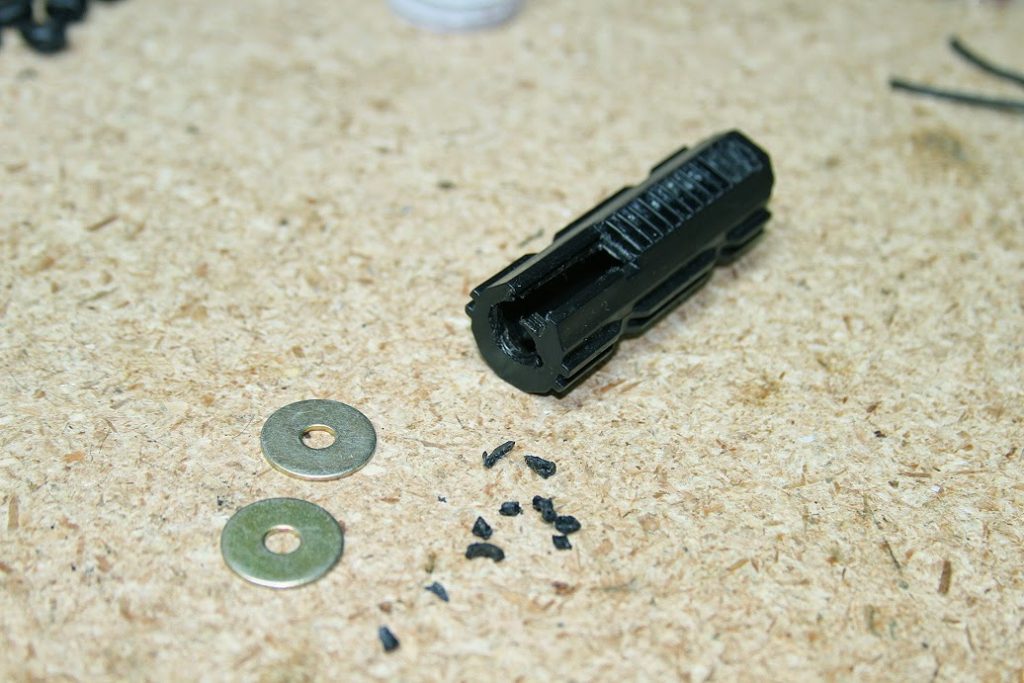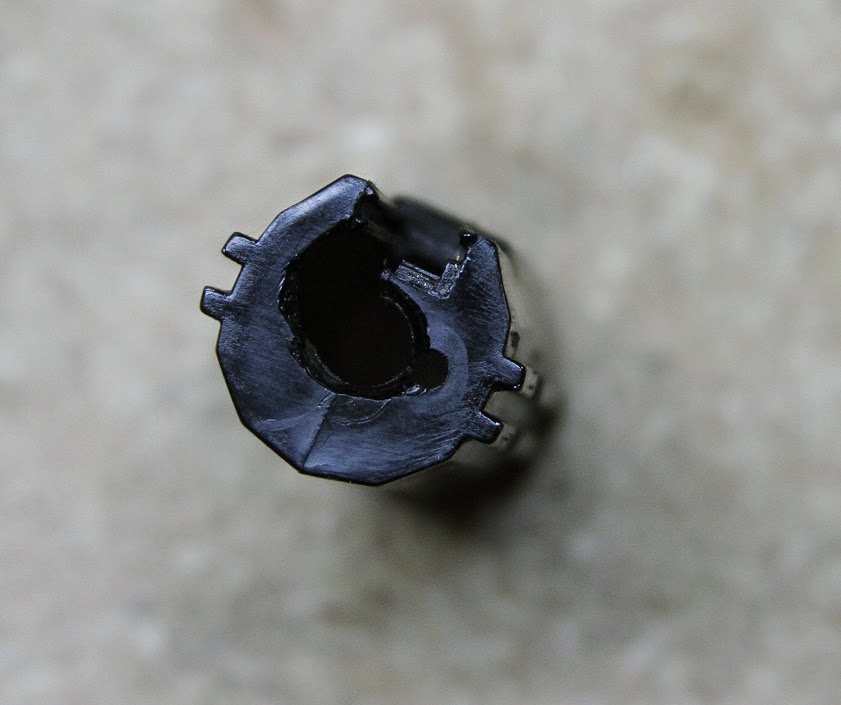If you know much at all about Angle Of Engagement (AOE) correction, you will invariably know there are two approaches or methodologies to tackling it:
- The most popular method is to apply various layers or thicknesses of Sorbo, rubber, or other material to the back of the cylinder head until you’ve achieved proper AOE. This generally takes a bit of time and experimentation to do properly. As a side benefit, you will have gained a modicum of shock absorption for your piston and gearbox.
- The second method is to add spacers (such as washers) to the area between the piston and the piston head. In theory, this can solve the AOE problem faster as you do not have to cut or glue any material to the cylinder head. With a simple selection of washers (metal or fiber), you can complete the job in less than a minute.
I do not like 2nd method for the following reason:
 Over time the screw holding the piston head and the washers will loosen ever so slightly causing just enough slop to begin the process of rounding our your piston head indexing hole. If you’ve forgotten to lock-tite your piston head screw down, this can occur in just a few hundred rounds downrange. As was the case with this particular fellows’ AEG – it failed after approximately 6 magazines after they performed the “washer” style AOE correction. In this case, the piston head screw not only augured out a rather wide hole, it busted off the metal rack of teeth from the piston and also cracked the piston head. Due to the sudden severe failure of the piston assembly, I can only conclude this caused additional loading issues as the sector gear and anti-reversal latch were also destroyed in the process.
Over time the screw holding the piston head and the washers will loosen ever so slightly causing just enough slop to begin the process of rounding our your piston head indexing hole. If you’ve forgotten to lock-tite your piston head screw down, this can occur in just a few hundred rounds downrange. As was the case with this particular fellows’ AEG – it failed after approximately 6 magazines after they performed the “washer” style AOE correction. In this case, the piston head screw not only augured out a rather wide hole, it busted off the metal rack of teeth from the piston and also cracked the piston head. Due to the sudden severe failure of the piston assembly, I can only conclude this caused additional loading issues as the sector gear and anti-reversal latch were also destroyed in the process.
So your .10 cent washer AOE fix caused close to $25 – $30 in damage plus having to clean out all the shredded polycarbonate out of your gearbox. I have seen this occur quite a bit on washer method AOE corrections, actually. I really do not recommend it. The most likely reason these fail as they do is because once the washers have been added, there is nothing except the screw tension keeping the whole assembly from wandering out of alignment. If you note the design of your piston head, you will see it has a cylindrical piece that is inserted into the piston – this is to prevent it from wandering from side to side. Stacking washers removes this protection and thus you get problems.
In summary – don’t be cheap on your AOE corrections. Put in the time and do them properly. The first method isn’t any more expensive than the second. The only thing it really costs you is time.
